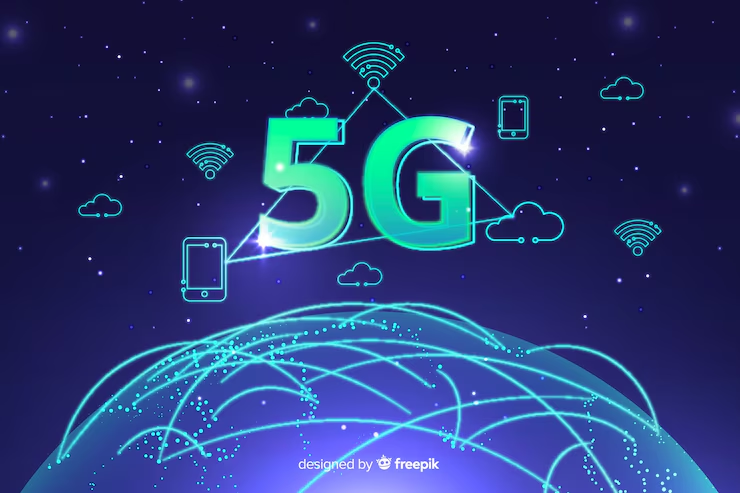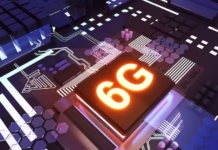5G Slicing: The Key to 5G’s True Power?
Hey there, telecom folks! You’ve probably heard the buzz about 5G Network Slicing, but what’s the deal? Is it just another techy fad, or is it truly the game-changer we’ve been waiting for? Well, grab a coffee, because we’re about to dive deep into the world of 5G slicing and why it’s a BIG deal for mobile network operators like you.
Why Should You Care About 5G Slicing?
Let’s be real, the telecom landscape is changing faster than ever. We’ve got the Internet of Things (IoT) exploding, Industry 4.0 demanding ultra-reliable connections, and consumers hungry for lightning-fast speeds. How can you possibly keep up with all these different needs with a one-size-fits-all network? That’s where 5G slicing comes in.
Think of it like this: imagine your 5G network is a giant pizza. With 5G slicing, you can cut that pizza into different slices, each with its own unique toppings (network capabilities). You can have a slice with extra cheese (high bandwidth) for video streaming, a slice with pepperoni (low latency) for gaming, and a slice with veggies (enhanced security) for critical applications. You get the idea!
5G Network Slicing lets you create multiple virtual networks on top of your existing infrastructure. Each slice is tailored to meet specific needs, whether it’s for Enhanced Mobile Broadband (eMBB), Ultra-Reliable Low-Latency Communications (URLLC), or Massive Machine-Type Communications (mMTC).Pretty cool, right? This means you can offer customized services to different customers and industries without having to build separate physical networks. Talk about efficiency!
So, How Does 5G Network Slicing Work?

- 5G Network Virtualization: This is the foundation of slicing. It allows you to create virtualized network functions (VNFs) – think of them as software building blocks – that can be easily deployed and managed. This means you can move network functions around and scale them up or down as needed, without being tied to specific hardware. Key technologies here are Software-Defined Networking (SDN) and Network Function Virtualization (NFV). SDN gives you centralized control of the network, while NFV lets you run network functions on standard servers instead of specialized hardware. This makes the network much more flexible and agile.
- 5G Network Architecture: The 5G Service Based Architecture (SBA) provides the framework for creating and managing those virtualized slices. It’s all about open interfaces and standardized APIs, which make it easier to connect different parts of the network and automate tasks. This is a big shift from previous generations of mobile networks, which were more rigid and harder to customize.
- 5G Core Network Slicing: This is where the magic really happens. The 5G core network, the brains of your operation, is sliced into independent logical networks. Each slice gets its own dedicated resources – bandwidth, processing power, and so on – so they don’t interfere with each other. It’s like having multiple mini-networks within your main network!
- End-to-End Network Slicing: This ensures that the slicing extends from the core network all the way to the edge of the network, where your customers connect. This is crucial for delivering a consistent and seamless experience, regardless of where the user is or what device they’re using. Think of it as a complete, customized pipeline from the core to the edge, tailored for each specific application.
Essentially, 5G Slice Management gives you incredible control. You can dynamically allocate resources and create customized network slices with different performance characteristics. It’s like having a super-powered network control panel where you can fine-tune everything to perfection – bandwidth, latency, security, you name it!
What’s in It for You? The Benefits of 5G Slicing
Now, you might be thinking, “Okay, that’s cool and all, but what are the real benefits for my business?” Well, buckle up, because 5G Network Slicing offers a whole lot of goodies:
- Improved efficiency: You can optimize resource utilization and reduce costs by sharing infrastructure. No need to build separate networks for each type of service – just slice up your existing network and make it work smarter, not harder!
- Enhanced flexibility: Quickly adapt to changing demands and create new services on the fly. Got a new customer with unique requirements? No problem, just spin up a new slice with the specific features they need.
- Increased revenue: Offer differentiated services and tap into new market opportunities. Imagine offering premium slices with guaranteed performance for high-value customers, or specialized slices for different industries. This opens up a whole new world of revenue streams.
- Better customer experience: Deliver tailored network experiences that meet specific needs. Gamers get their low-latency slice, while video streamers enjoy high bandwidth. Everyone’s happy!
- Enhanced security: Isolate critical applications and protect sensitive data. By separating different types of traffic into different slices, you can create secure, isolated environments for sensitive applications like healthcare or finance.
5G Slicing for Vertical Industries is a game-changer. You can create dedicated slices for healthcare, automotive, manufacturing, smart cities, and more. Imagine offering a slice with guaranteed low latency for remote surgery or a slice with high bandwidth for connected cars. The possibilities are endless!
5G Network Slicing in Action: Real-World Examples
Still not convinced? Let’s look at some real-world examples of 5G Network Slicing in action:
- Smart factories: Manufacturers are using 5G slicing to create dedicated networks for robots, sensors, and other devices, improving efficiency and productivity. Imagine a factory floor where robots, sensors, and control systems all communicate seamlessly in real-time, thanks to a dedicated, ultra-reliable 5G slice. This allows for things like predictive maintenance, where potential problems are identified and addressed before they cause downtime, and remote control of robots, enabling experts to troubleshoot issues from anywhere in the world.
- Connected cars: Automotive companies are using 5G slicing to enable autonomous driving and enhance in-car entertainment systems. With a dedicated slice for autonomous driving, cars can communicate with each other and with the surrounding infrastructure with ultra-low latency, improving safety and efficiency. Meanwhile, passengers can enjoy high-bandwidth streaming and interactive entertainment on a separate slice.
- Telehealth: Healthcare providers are using 5G slicing to support remote patient monitoring and telemedicine applications. Imagine a world where doctors can perform remote surgeries with the help of robots and high-definition video feeds, thanks to a dedicated 5G slice with guaranteed low latency and high reliability. This can revolutionize healthcare, especially in remote areas with limited access to specialists.
- Smart cities: Cities are using 5G slicing to improve traffic management, public safety, and environmental monitoring. Sensors and cameras throughout the city can feed data into a dedicated slice, enabling real-time analysis and response to traffic congestion, accidents, and environmental hazards. This can make cities safer, more efficient, and more sustainable.
These are just a few examples of how 5G Network Slicing is transforming industries and creating new possibilities.
Challenges and Concerns: The Road Ahead
Of course, no technology is without its challenges. Implementing 5G network slicing in telecom networks requires careful planning and investment. Some of the challenges include:
- Complexity: Managing and orchestrating multiple network slices can be complex. Think about it – you’re essentially juggling multiple virtual networks at the same time, each with its own set of requirements and configurations. This requires sophisticated tools and expertise to ensure that everything runs smoothly. Automation and AI will play a crucial role in simplifying slice management and reducing operational complexity.
- Security: Ensuring the security of each slice is crucial, especially for critical applications. Isolating slices from each other is important, but you also need to protect each slice from external threats and vulnerabilities. This requires a multi-layered approach to security, including firewalls, intrusion detection systems, encryption, and robust authentication mechanisms.
- Standardization: 3GPP is working on 5G Network Slicing Standards, but interoperability remains a concern. Ensuring that different vendors’ equipment and software can work together seamlessly is essential for the widespread adoption of 5G slicing. This requires close collaboration between industry players and adherence to common standards.
Despite these challenges, the future of 5G Slicing looks bright. As the technology matures and standards evolve, we can expect to see even more innovative applications and use cases.
The Future of 5G Slicing: What’s Next?
So, what does the future hold for 5G Network Slicing? Here are a few predictions:
- Increased adoption: More and more telecom operators will embrace 5G slicing to meet diverse needs. As the benefits of slicing become clearer and the technology matures, we can expect to see widespread adoption across the telecom industry.
- Edge computing integration: Network Slicing and Edge Computing will converge to enable even more powerful applications. By bringing computing power closer to the edge of the network, where data is generated, 5G slicing can enable ultra-low latency applications and support real-time decision-making. This combination will be crucial for applications like augmented reality, virtual reality, and industrial automation.
- AI-powered automation: 5G Slicing Orchestration will become more automated and intelligent. AI and machine learning will play a key role in automating tasks like slice creation, resource allocation, and performance optimization. This will free up human operators to focus on more strategic tasks and ensure that the network is always running at peak efficiency.
- New business models: 5G slicing will enable new revenue streams and business models for telecom operators. Imagine offering customized network slices as a service (NSaaS), where businesses can subscribe to slices with specific performance characteristics tailored to their needs. This could create new opportunities for telecom operators to partner with businesses and generate new revenue streams.
The future is exciting, and 5G Slicing is at the forefront of this transformation.
Getting Started with 5G Slicing: Your Next Steps
Ready to get started with 5G Network Slicing? Here’s what you can do:
- Learn more: Dive deeper into the technical details and explore different use cases. There are plenty of resources available online and at industry events.
- Talk to your vendors: Discuss your specific needs and explore available solutions. Your vendors can help you assess your current infrastructure and identify the best way to implement 5G slicing in your network.
- Start small: Begin with a pilot project to test and validate the technology. This will allow you to gain experience with 5G slicing and identify any potential challenges before rolling it out on a larger scale.
- Stay informed: Keep up with the latest trends and developments in 5G slicing. The technology is constantly evolving, so it’s important to stay informed about new standards, use cases, and best practices.
Remember, 5G Slicing is not just a technology; it’s a strategic enabler that can help you unlock the true power of 5G and drive innovation in the telecom industry.

Wrapping It Up: Key Takeaways
- 5G Network Slicing allows you to create customized network experiences for different use cases.
- It offers numerous benefits, including improved efficiency, flexibility, and revenue generation.
- Real-world examples demonstrate the transformative potential of 5G slicing across various industries.
- While challenges exist, the future of 5G slicing is promising, with continued innovation and adoption.
FAQs: Clearing Up the Confusion
- Is 5G slicing only for large enterprises? Nope! 5G slicing can benefit businesses of all sizes, from small startups to large corporations.
- Is 5G slicing expensive? The cost of implementing 5G slicing varies depending on your specific needs and infrastructure. However, the long-term benefits often outweigh the initial investment.
- Do I need new equipment for 5G slicing? You might need to upgrade some of your network components, but 5G slicing primarily relies on software-defined networking (SDN) and network function virtualization (NFV).
What are your thoughts on 5G Network Slicing? Are you ready to embrace this game-changing technology? Share your comments and questions below!
Further Reading:
- 5G Network Slicing Explained – NYBSYS
- 5G Network slicing
- (PDF) 5G Network Slicing: A Security Overview – ResearchGate
- 5G network slicing – Wikipedia
- How network slicing will benefit society – Ericsson
Let’s shape the future of 5G together!









